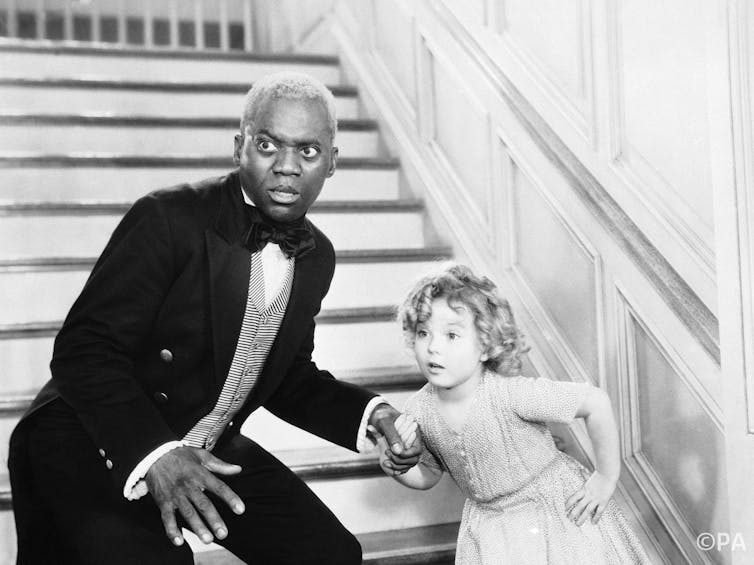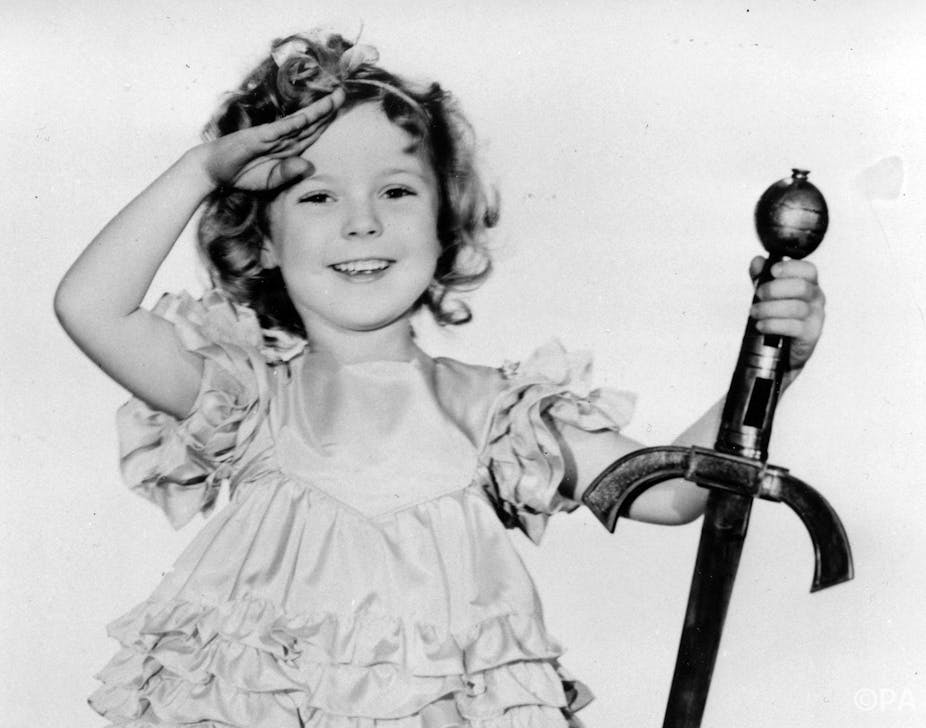The recent death of Shirley Temple at the age of 85 appears to buck the trend for the tragic child star. In marked contrast to the likes of Judy Garland and Michael Jackson, Temple made the transition from child actress to wife, mother and politician, living a long and apparently fulfilling life.
Temple’s career as an actress ended more than 50 years ago, yet she is still best known for her performances as a child in 1930s Hollywood. Born in 1928, by the time she was six she was stealing the limelight in a Fox feature entitled Stand Up and Cheer. The then financially beleaguered Fox decided to take a risk on their diminutive new star and signed her up to a seven-year contract. It was to prove a wise gamble for both parties. Temple’s films were highly lucrative and played a crucial role in turning round the fortunes of the ailing Fox and bringing it back into profit.
Temple herself went on to have a short-lived but hugely successful cinema career. In 1934 alone she made eight films. By 1935 she was topping the annual box office stars list, a position she would then hold for four consecutive years. Her earnings continued to rise and by 1938, aged ten, she was earning the seventh highest salary in the US.

So Temple was indeed something of a phenomenon in 1930s America. More photographed than President Franklin D Roosevelt, she was the youngest person to ever appear on the cover of Time magazine. A full-time secretary was employed to respond to the 4,000 or so fan letters she received each week.
To a great extent her appeal lay in the optimism and hope she embodied. This was America in the Great Depression and her shiny life story and personal achievement told America that its embattled capitalist system really could work. And of course her film roles told similar stories.
Typically she played an orphan or the child of a widowed parent who, through her own determination and unfailing cheerfulness, would ensure happiness for herself and those around her. Other child stars such as Baby Peggy Montgomery and Mickey Rooney also enjoyed success in Hollywood during the Depression years. But it was Temple, with her all-American home-spun charm, championing of the basic American values of hard work and self-reliance, and optimism for the future that only a child could convey, who proved by far the most successful of all.
So was Temple indeed a star for more innocent times? Was she simply the darling child of an America in need of hope and harmless entertainment? As we watch little Shirley today, all angelic curls and short frock, singing “The Good Ship Lollipop” to a group of enraptured adult men in Bright Eyes, we might be forgiven for feeling somewhat uneasy. Modern day sensibilities may well lead us to question her performance and the response of the grown men apparently unable to take their eyes off her.
In a review of Wee Willie Winkie published in 1938, Graham Greene expressed similar disquiet, criticising little Shirley’s “dimpled depravity” and the appeal of her “well shaped and desirable little body”. In Greene’s eyes Temple’s films provided a respectable cloak for paedophilic desire. Fox and Temple sued and Greene was forced to pay £3,500 in damages.
Yet Temple’s own career perhaps reinforces Greene’s questioning of her innocence. She certainly didn’t fall into stardom by accident. Even before her birth her mother, Gertrude Temple, was preparing her for a theatrical career through “association with music, art and natural beauty”. At the age of four she was already appearing in a series of one reel shorts for Educational Pictures entitled Baby Burlesks. Temple and other young children sang and danced in fancy, indeed provocative, adult costumes worn over nappies fastened with an outsize pin.

So while we mourn her passing and celebrate a life well lived, we should guard against a nostalgia for a more innocent age. This was a child star created at the hands of pushy parents and studio executives whose ambition far outstripped anything we might see on The X Factor and other contemporary talent shows.
And as we watch Shirley charm with dimples, curls and ever-present smile, we should not be surprised at any unease we might feel. Box office profit was, after all, the bottom line and the men in raincoats condemned by Greene were paying for tickets along with everyone else.

